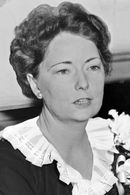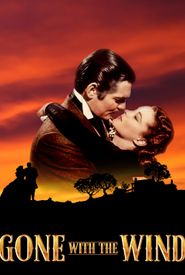Margaret Mitchell was an American historical novelist and journalist, best known for her Pulitzer Prize-winning novel "Gone with the Wind" (1936). Born in 1900 in Atlanta, Georgia, Mitchell came from a prominent family with a long history of lawyers, politicians, and historians. Her father, Eugene Mitchell, was a prominent lawyer and politician, while her mother, Maybelle Stephens Mitchell, was a suffragist leader and co-founder of the League of Women Voters in Georgia.
Mitchell's early life was marked by her tomboyish nature and her love of adventure stories. She began writing at a young age and developed a fascination with the American Civil War and Reconstruction Era. Her maternal grandmother, Annie Stephens, who lived with the family, was a primary source of information about the war and its effects on Atlanta.
Mitchell's parents moved to a new residence on Peachtree Street in 1912, where she attended Atlanta's Washington Seminary. She was an avid reader and developed a love for the works of Edith Nesbit and Thomas Dixon. She started writing her own fairy tales and adventure stories, which her mother kept in white enamel bread boxes.
In 1914, Mitchell started attending Washington Seminary, where she joined the drama club and literary club. She published her first stories in the school's yearbook and developed a reputation as a talented young writer. After graduating in 1918, Mitchell attended Smith College in Northampton, Massachusetts, where she was engaged to army lieutenant Clifford West Henry. However, Henry was mortally wounded in France in 1918, and Mitchell continued to mourn him for years.
Mitchell's mother died of the flu in 1919, and Mitchell dropped out of college to take over the family's household. She struggled with her own health problems and feelings of disappointment with her life's direction. In 1920, she made her Atlanta society debut and started dressing as a flapper. She shocked the high society by performing an Apache dance in a charity ball and kissing her male partner during the performance.
In 1922, Mitchell married Berrien ("Red") Kinnard Upshaw, a bootlegger with a violent temper. The couple moved in with Mitchell's father, but their marriage ended in divorce in 1924. Mitchell then married John Robert Marsh, a former roommate of Red's, in 1925. The couple set up residence at the Crescent Apartments in Atlanta, which they nicknamed "The Dump".
Between her two marriages, Mitchell worked as a journalist for "The Atlanta Journal Sunday Magazine" from 1922 to 1926. She wrote 129 feature articles, 85 news stories, and several book reviews, and secured an interview with the popular actor Rudolph Valentino in 1923. After resigning from the magazine, Mitchell worked as a gossip columnist for a few months before focusing on her writing career.
Mitchell started working on her historical novel in 1928, which would eventually become "Gone with the Wind". The book was published in 1936 and won the Pulitzer Prize for Fiction in 1937. The novel became a bestseller and cemented Mitchell's status as a literary celebrity. She continued to write and publish articles, but never intended to write another novel.
During World War II, Mitchell served as a volunteer for the American Red Cross and raised money for the war effort by selling war bonds. She died on August 16, 1949, after being struck by a drunk driver while crossing Peachtree Street. She was buried at Oakland Cemetery, Georgia, alongside her husband, who died in 1952. Despite her untimely death, Mitchell's novel "Gone with the Wind" remains a beloved classic and a testament to her enduring legacy as a writer.















